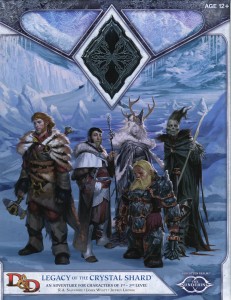While the Dungeon’s Master team enjoys some well-deserved vacation time, we’re breaking out the greatest hits and shining a spotlight on a few of our favourite articles from 2013. We’ve searched for hidden gems that our newer readers might have missed and our long-time readers will enjoy reading again. Enjoy a second look at these greatest hits from Dungeon’s Master.
When I wrote this article I put a back to school spin on it. But rereading it I realize that the advice contained within is applicable pretty much year round. If you’re a gaming nerd or just a gaming enthusiast you should do your part to share your love of games with others.
The challenge I’ve found when trying to get new people into gaming is where to start. Most people hear “board games” and think of Monopoly or Scrabble. This is a reasonable response based on their limited gaming frame of reference, and it presents you with a great opportunity to show them just how far board games have come in the years since those classics were invented.
When I talk games with the uninitiated I usually begin by asking them what kind of games they enjoy. If they say they don’t know I present them with some of the gateway games that I love. Games like Ticket to Ride, Settlers of Catan and Forbidden Island. These games are relatively simple and easy to learn. But even explaining what these games are like can scare away a new gamer. I’ve found that to really get someone hooked you need to sit them down and play with them.
When bringing new gamers into the fold simplicity is key. Cooperative games are also very helpful as they encourage cooperation rather than an adversarial approach. Games like Catan and Forbidden Island don’t use a traditional game board which often blows people away as you begin setting things up. Today’s board games are sophisticated, inventive, and usually a lot of fun. These aren’t your parents’ games, but your parents may still enjoy them.
Just remember that your enthusiasm will be encouraging and contagious when you teach games to new people. However, keep the first few games light hearted and simple. Don’t necessarily introduce all the optional advance rules. Purposely make a bad move or two if they’ll demonstrate an important mechanic. Don’t throw the game, but make sure the new players are getting it, having fun, and have a chance of success.
If you got new games for Christmas and you’re going back to school next week, become a gaming ambassador this semester. Find new people with whom you can share the great hobby of board games. And if they’re really keen, then start to talk to them about RPGs and things a little bit more advanced than Monopoly.
From September 3, 2013, Dungeon’s Master once again presents: Back to School Tips for Gamers.
 After a three week break we finally returned to Icewind Dale to pick up where we left off before Christmas. When we last played the party overwhelmed Hammerstone, knocking him unconscious despite his guards’ best effort to overtake the heroes. But before the PCs could revel in their victory Zombies entered the Halls of Black Ice and attacked indiscriminately. The PCs grabbed the unconscious Hammerstone and fled down an unknown passage, deeper into the Dwarven mines.
After a three week break we finally returned to Icewind Dale to pick up where we left off before Christmas. When we last played the party overwhelmed Hammerstone, knocking him unconscious despite his guards’ best effort to overtake the heroes. But before the PCs could revel in their victory Zombies entered the Halls of Black Ice and attacked indiscriminately. The PCs grabbed the unconscious Hammerstone and fled down an unknown passage, deeper into the Dwarven mines.